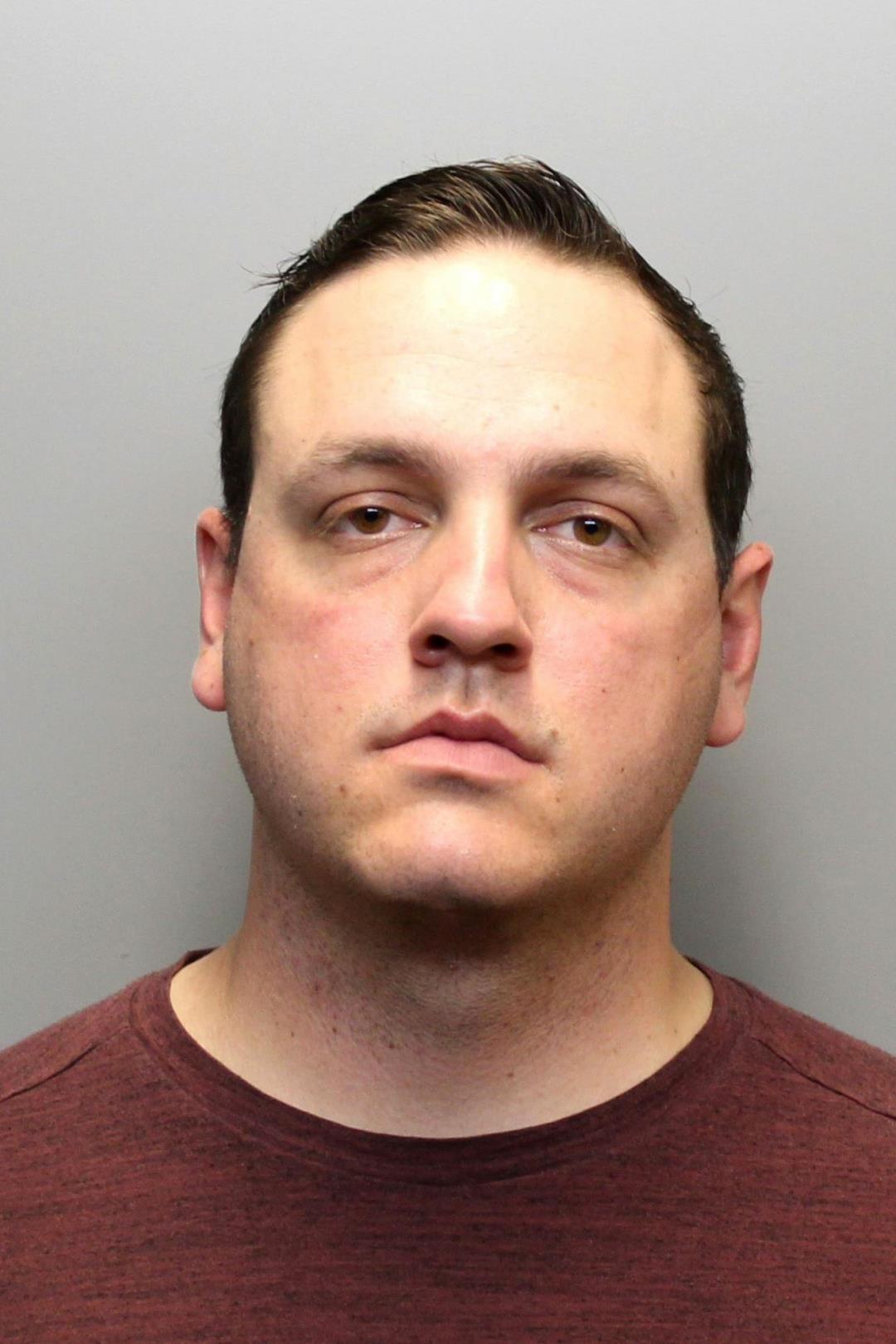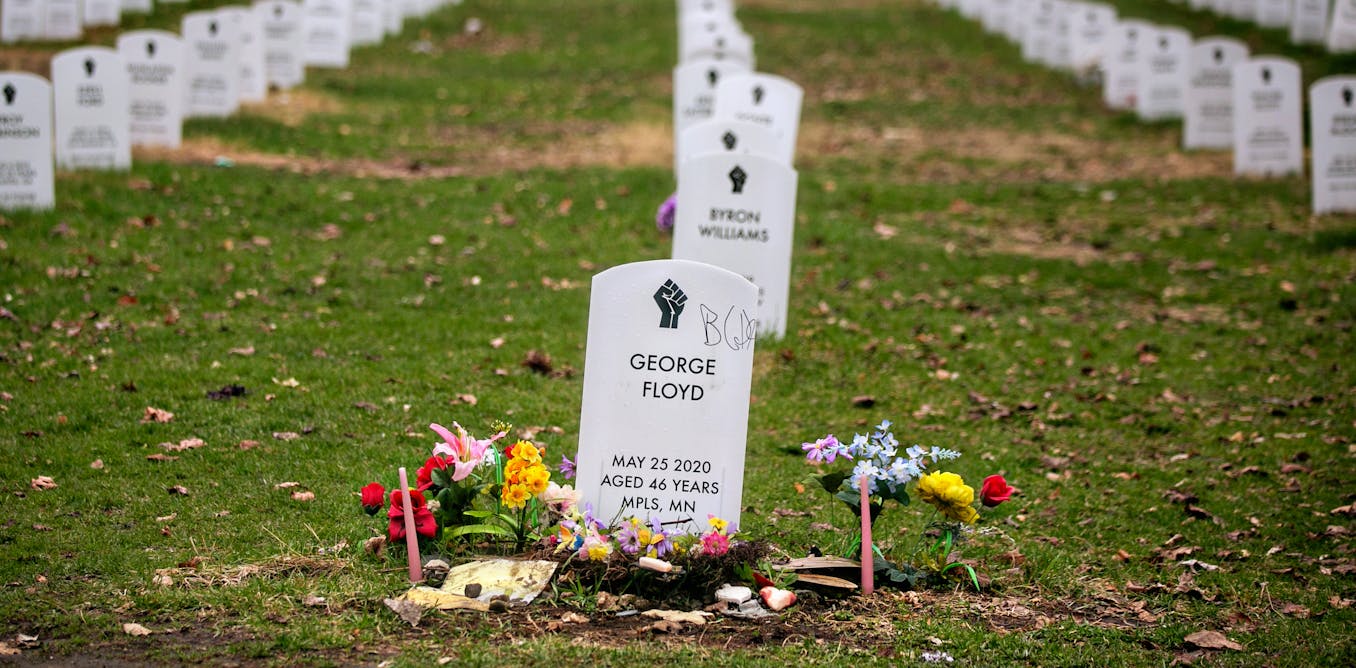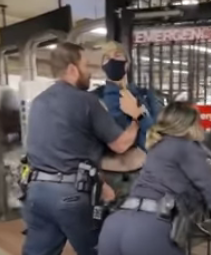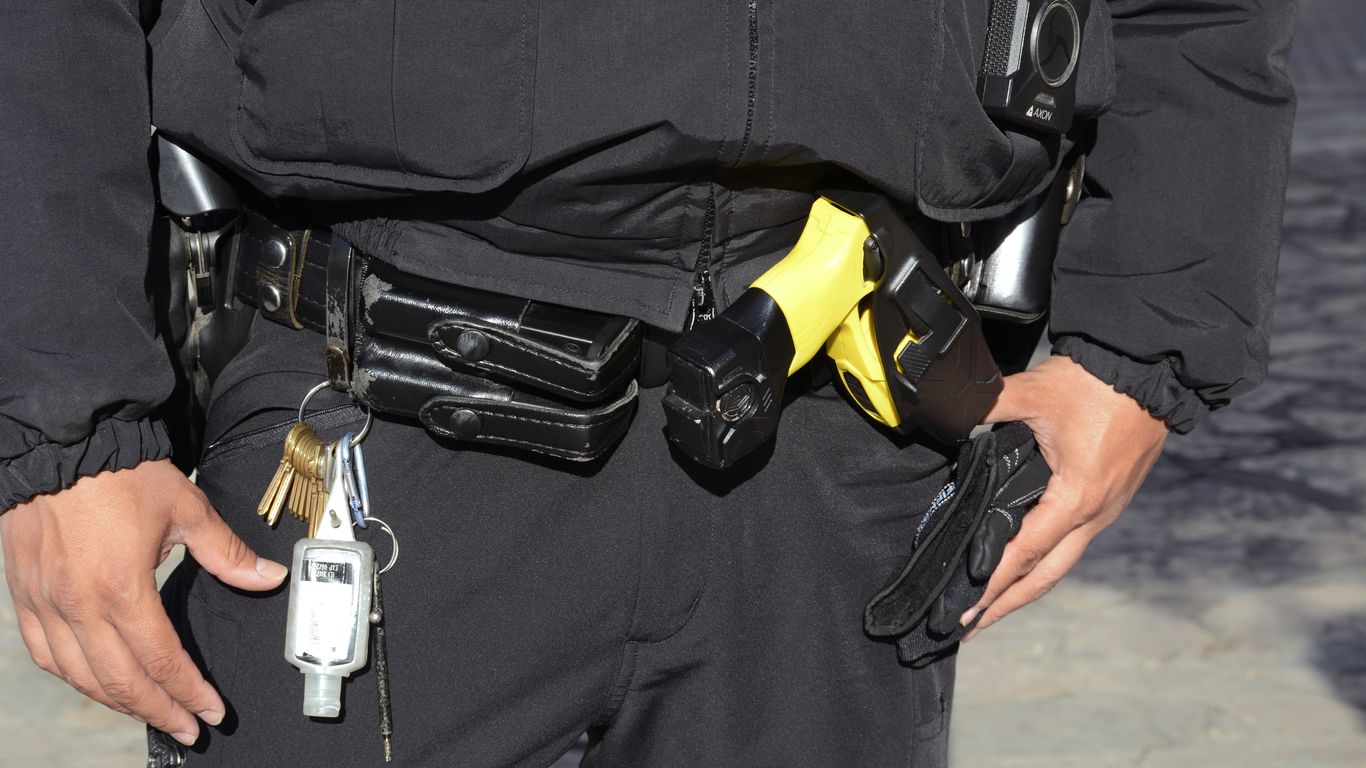I watched them & read about it. Did it ever come out what Darby removed from the squad car that he covered the camera for?I read that the judge has finally made the tapes from the cops’ body cams available to the public.
They are stunning to watch, especially since Huntsville’s mayor continues to support Darby, even after the conviction. Having had a chance to watch the tapes well in time to pull his support, instead the mayor went in the opposite direction.
Bad cop; good cop stories; Part II...
- Thread starter MattinBama
- Start date
- Status
- Not open for further replies.
I think it's still a mystery what was in the trunk, but I'm not sure.I watched them & read about it. Did it ever come out what Darby removed from the squad car that he covered the camera for?

Ex-Cop Who Joked About Rough Arrest Gets 5 Years
Family says Austin Hopp broke 73-year-old Karen Garner's arm during 2020 arrest
the cops get no real punishment and the taxpayers of loveland pay the penalty. something is not right about that.
Ex-Cop Who Joked About Rough Arrest Gets 5 Years
Family says Austin Hopp broke 73-year-old Karen Garner's arm during 2020 arrestwww.newser.com
Take his gun and badge, then throw his butt in jail for the max number of years on an assault charge

 www.wlbt.com
www.wlbt.com

U.S. Marshals investigating after handcuffed suspect hit in face
U.S Marshals Service is looking into an incident involving a member of their task force.

Revealed: pipeline company paid Minnesota police for arresting and surveilling protesters
Enbridge picked up the tab for police wages, training and equipment – and let county police know when it wanted demonstrators arrested
This reminds me of the union busting days of cops and Pinkertons being paid by the corporations to put down strikes. I would hope this isn't legal somehow, there is certainly a massive conflict of interest here.
Revealed: pipeline company paid Minnesota police for arresting and surveilling protesters
Enbridge picked up the tab for police wages, training and equipment – and let county police know when it wanted demonstrators arrestedwww.theguardian.com

Police killings of civilians in the US have been undercounted by more than half in official statistics
Research found that police officers killed more than 30,000 people from 1980 to 2018 – 17,000 more than official federal data suggests.
 theconversation.com
theconversation.com
one of the new york police union offices got raided by the fbi today

FBI Raids NYPD Sergeants Union Headquarters, Ed Mullins' Home
The FBI descended on the Lower Manhattan office of the NYPD union on Tuesday morning as part of an "ongoing investigation," according to an agency spokesperson.

A Washington state sheriff is facing criminal charges after incident with Black newspaper delivery driver | CNN
A Washington state sheriff who allegedly tailed a Black man delivering newspapers falsely accused the man of threatening his life, summoning dozens of officers to the scene to apprehend him, prosecutors said Tuesday.

NYPD Officers Eject Commuter Who Asked Them to Wear Masks
Mayor says their behavior was 'unacceptable'

How Police Justify Killing Drivers: The Vehicle Was a Weapon (Published 2021)
A Times investigation into a common defense for shooting motorists found that some officers had put themselves in danger. Others appeared to face no peril at all.
PHENIX CITY, Ala. — On a Sunday in May 2017, a patrol car sat outside the city’s oldest public housing project, waiting for anyone acting suspiciously. The two police officers heard Cedric Mifflin before they saw him, blasting music from a silver Mercury Grand Marquis. Then they tried to pull him over: He wasn’t wearing a seatbelt.
Mr. Mifflin, a 27-year-old Black man, kept driving. What happened next is disputed, but how it ended is certain. Officer Michael Seavers leapt out of the patrol car, drew his gun and fired 16 times at the moving car. He thought Mr. Mifflin intended to run him over, he said later.
“I had never felt the fear that I had at that moment,” Officer Seavers, who is white, told investigators in a statement. He said he thought of what a vehicle can do “to a human body and how I would die if I didn’t react.”
The officer’s defense of killing Mr. Mifflin, who wielded neither a gun nor a knife, is one repeated over and over across the country: The vehicle was a weapon. In a New York Times investigation of car stops that left more than 400 similarly unarmed people dead over the last five years, those words were routinely used to explain why police officers had fired at drivers.
here is a story we don't get to read enough

 www.axios.com
www.axios.com

2 former police officers who used Tasers on man over 50 times convicted of murder
The second-degree murder charge carries a possible sentence of 10 years to life in prison.

All 5 Henry County officers indicted on murder charges turn themselves in
Five police officers from Henry County who were indicted on murder charges related to the 2019 death of a 24-year-old man in police custody each turned themselves in Monday, officials said. All five were later released on $100,000 bond each.
I think I read somewhere in this thread that we were asked to tell some good stories about cops, not just bad. So here goes…
I was recently driving thru Hillsboro on a state highway and got pulled over for speeding by the local policeman. Hillsboro has the reputation of being one of those communities that lean too much on tickets and fines to raise money.
So imagine my surprise when the cop gave me a warning ticket. I was so grateful.
And, the police in Decatur do not routinely pull you over for not wearing a seatbelt.
I was recently driving thru Hillsboro on a state highway and got pulled over for speeding by the local policeman. Hillsboro has the reputation of being one of those communities that lean too much on tickets and fines to raise money.
So imagine my surprise when the cop gave me a warning ticket. I was so grateful.
And, the police in Decatur do not routinely pull you over for not wearing a seatbelt.
I refuse to watch the video here, but this story is beyond infuriating...


Tucson officer fired after fatally shooting man in motorized wheelchair 9 times from behind
Tucson Officer Ryan Remington was confronting Richard Lee Richards over suspected shoplifting and shot him from behind as he entered a Lowe's store.
www.azcentral.com
- Status
- Not open for further replies.
Latest threads
-
When politicians boast about preserving things they voted to cut
- Started by Its On A Slab
- Replies: 3
-
-
-



